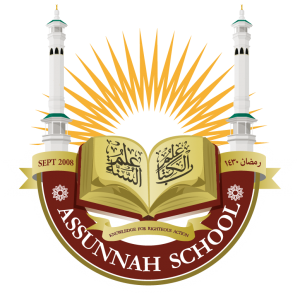English Policy
اقْرَأْ بِاسْمِ رَبِّكَ الَّذِي خَلَقَ
[ العلق: 1] Read in the name of your Lord who created
Intent
We teach children to flourish as writers and put reading at the core of the curriculum. We encourage a lifelong love of reading and promote the importance of building a varied vocabulary. We understand that fluent readers become accomplished writers, so we provide the support and challenge needed for every child to express themselves and celebrate their uniqueness.
We aim for all children to:
- read fluently, with confidence, at and beyond age expectations.
- develop a love of books and read for pleasure.
- experience the love of words and build a strong and varied vocabulary.
- fully comprehend what they read and can discuss texts in depth.
- read independently across the curriculum and understand a range of genre.
- reflect what they are reading in their writing.
- understand the writing process and how authors produce their work.
- understand the importance of self-correction in both reading and writing.
- feel confident with all text types, their structure and appropriate language.
- use phonics knowledge, spelling rules and grammar consistently.
- have neat and legible handwriting.
- always preparing the children for the next stage of learning.
Curriculum Implementation
English will be taught discretely as well as within the school’s creative curriculum. There is an expectation that children will be encouraged to reflect taught skills through other subjects.
There will be a combination of explicit skills based teaching e.g. handwriting and phonics. Reading and writing are closely linked and will support and reinforce each other.
Early Years Foundation Stage
We believe that communication and language with opportunities to explore reading and writing underpins children’s future learning. The practice in the Early Years Foundation Stage will follow the EYFS curriculum guidance and will work towards the Early Learning Goals aiming to meet the statement of the goals by the end of reception year. In Reception the daily routine will include planned and spontaneous activities that include:
- a wealth of opportunities to develop and experience speaking and listening;
- experiences that develop gross and fine motor skills through play and handwriting activities;
- sharing and enjoying a range of rhymes, songs, stories and books;
- immersion in a print rich environment with opportunities for oral language and written communication, e.g. differentiated phonic activities;
- focus activities that teach children early communication language and literacy skills.
- Group reading activities are planned where, children share and have the opportunity to respond to verbally posed questions. Encourage children to show a written response on whiteboards and begin to use KS1 formats as appropriate through the year.
Key Stage 1
At the beginning of Year 1, the assessments from the Early Years Foundation Stage will enable the planned work to follow a smooth transition.
The teaching of English in KS1 will include:
- explicitly taught and planned sessions following the guidance and objectives of the National Curriculum
- Speaking and listening activities, e.g. role play, talk partners, drama and hot seating in order to prepare pupils for the writing process;
- word level work with explicit teaching of phonics and spelling;
- sentence level work led by quality texts to develop grammatical awareness and punctuation skills;
- text level work using a range of genres will develop comprehension and composition skills and the understanding of print;
- letter formation and handwriting taught and modelled;
- Immersion in a print rich environment that promotes a reading culture and develops children’s oral and written communication.
Key Stage 2
At the beginning of Year 3, the teacher assessments and the statutory tests will enable the planned work to follow a smooth transition.
The teaching of English in KS2 will include:
- explicitly taught and planned sessions following the guidance and objectives of the National Curriculum;
- genre overviews to identify the success criteria and weekly plans tailored to the needs of our children;
- word level work with explicit teaching of spelling strategies and rules and phonics where required;
- sentence level work led by quality texts to develop grammatical awareness and punctuation skills;
- text level work involving reading a range of genres to develop comprehension skills and scaffold writing;
- a range of text types, including cross-curricular writing, modelled to promote sustained composition;
- handwriting and presentational skills taught and modelled using a cursive style of handwriting;
- immersion in a print rich environment that promotes a reading culture and develops speaking and listening;
- grammar sessions to ensure children recognise how to be accurate in what they say and write and well as be able to recognise different word classes. Links are made between grammar skills and written outcomes to make learning purposeful.
Spoken Language
In the EYFS under the area of Communication and Language we focus on the aspects of:
- Listening and attention
- Understanding
- Speaking
In line with the National Curriculum, we believe that spoken language is fundamental to children’s development and that confidence in this area is essential to be successful in all areas of English.
Pupils should be taught to:
- listen and respond appropriately to adults and their peers ask relevant questions to extend their understanding and knowledge use relevant strategies to build their vocabulary articulate and justify answers, arguments and opinions
- give well-structured descriptions, explanations and narratives for different purposes, including for expressing feelings
- maintain attention and participate actively in collaborative conversations, staying on topic and initiating and responding to comments
- use spoken language to develop understanding through speculating, hypothesising, imagining and exploring ideas
- speak audibly and fluently with an increasing command of Standard English participate in discussions, presentations, performances, role play, improvisations and debates and recitals gain, maintain and monitor the interest of the listener(s)
- consider and evaluate different viewpoints, attending to and building on the contributions of others
- select and use appropriate registers for effective communication.
These statements apply to all years. The content should be taught at a level appropriate to the age of the pupils. Pupils should build on the oral language skills that have been taught in preceding years.
Pupils should be taught to develop their competence in spoken language and listening to enhance the effectiveness with which they are able to communicate across a range of contexts and to a range of audiences. They should therefore have opportunities to work in groups of different sizes – in pairs, small groups, large groups and as a whole class. Pupils should understand how to take turns and when and how to participate constructively in conversations and debates.
Attention should also be paid to increasing pupils’ vocabulary, ranging from describing their immediate world and feelings to developing a broader, deeper and richer vocabulary to discuss abstract concepts and a wider range of topics, and to enhancing their knowledge about language as a whole.
Pupils should receive constructive feedback on their spoken language and listening, not only to improve their knowledge and skills but also to establish secure foundations for effective spoken language in their studies at primary school, helping them to achieve in secondary education and beyond.
There is progression in the skills taught and assessment of significant achievements in spoken language. Digital media, recording devices and photographs are a means of capturing progress and keeping records.
Reading
We believe in developing a reading culture throughout the school by creating welcoming book areas in classrooms, a school library, and raising the profile of reading through a print rich environment, attractive book displays and promoting the written word at all times. High priority is given to reading in all Key Stages. Children work with mixed ability partners during whole class guided reading sessions, where reading and comprehension skills are modelled and practised. This method of guided reading ensures children are taught a range of reading skills which they practice at school and home. Children take home reading books to read to their parent/carer and parents and are encouraged to ask various types of questions as they read together to help with deepening understanding. Reading for fluency is encouraged in EYFS and KS1 by encouraging parents/carers to listen to each ‘Read Write Inc’ text multiple times each week and modelling fluent reading for their child. These texts are closely linked to the phonics that children are being taught.
Children who need additional support with their reading read more frequently. They will have planned interventions which could include reading to a class teacher, a member of support staff. The children also have access to a variety of reading for pleasure materials in the classroom. The school encourages staff to read a class novel to the children daily.
Reading for Pleasure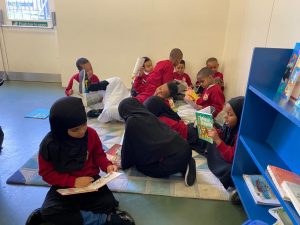
It is an expectation that teachers are role models for reading to their class. A class age-appropriate text which may be chosen from the recommended reading list is displayed and read to the children daily to support their development and love for reading for pleasure. (DEAR),drop everything and read. Teachers check and sign reading records weekly and encourage pupils to read a range of fiction and non-fiction books throughout the year. House points and class dojo are used in reading records when children have read every day in a week. Non-readers are followed up by comments to parents in the reading record or in person and a letter from the head teacher is sent to parents of children who have not read every day in a week on more than one occasion
Reading is taught through:
- Whole class reading that develops listening skills, a love of story and reading for pleasure. This is teacher led reading with children listening and responding to questions, predictions and vocabulary choices as appropriate to the level of the children.
- Shared reading that immerses children in the pattern of story and features of text types. This happens in English sessions when introducing text and prior to writing. The teacher models as an expert reader and draws out the key elements of the content .
- Guided reading that targets children’s reading skills. Whole class guided reading takes place through reading quality texts and focussing on comprehension skills. Children focus on one cognitive domain of reading during a session to immerse them in a particular skill such as inferring meaning. Literacy Shed Plus resources, which include: Vipers; Vocabulary Ninja and Dadwavers and FRED PowerPoint presentations are used to create a vocabulary rich environment. During homework activities in KS1 and KS2, children are encouraged to answer skills questions as they read to deepen understanding.
- Independent reading in school and at home.
In the Early Years Foundation Stage and KS1 children take home reading scheme books and a book chosen from the library to read or look at with their parents. Books are changed at least weekly but can be more frequent. Although in EYFS and KS1 re-reading a text is key. The reading scheme books have a controlled vocabulary and therefore children are moved through the stages as they are able to read the key words. More-able children, will move on to chapter books.
In KS2 appropriate reading books are chosen from banded levels that are matched to the reading ability level of the children. Children are taught to select books that are at their level but are monitored regularly by an adult to check they are selecting a ‘just right text’ for them. Books are changed regularly where appropriate to the text type. Some children in KS2 are also given scheme books to further support their reading skills.
Ask me what reading holiday activities encourage readers to extend their level of engagement with high quality texts, providing a higher level of fluency, comprehension and discussion. Extra assignments are offered to extend and give further opportunities to read at a greater depth of understanding. We are in the process of developing our school library and should provide reference and reading materials for children and teachers. throughout the curriculum.
The school encourages all children to join and use their local library and to participate in the library’s annual summer reading challenge. There are awards every Friday assembly for the reader of the week as well as writer of the week. Introducing this Autumn term reading café where parents/carers are encouraged to come into school and spend time reading with their children.
Phonics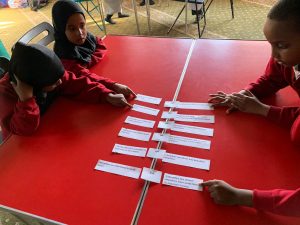
The children in Reception and KS1 follow the ‘Read Write Inc’ programme and practise the high frequency word lists. In KS2 those children who still need phonics input will continue with phonics booster sessions and where needed precision teaching to support children meeting age related expectations. In KS2 spelling is taught explicitly using the NNS (No Nonsense Spelling) program.
Phonics is taught explicitly in the Early Years Foundation Stage and KS1. Read Write Inc is a powerful teaching tool which ensures that young children will be well-placed to read and spell words with fluency and confidence by the time they reach the end of KS1. It is expected that by the end of KS1 the majority of children will achieve the expected standard. Children will apply phonic skills and knowledge to recognise and spell an increasing number of complex words. They will know one grapheme for each of the 44 phonemes and will be secure with less common grapheme/phoneme correspondence and recognise phonic irregularities.
Regular assessments will be carried out to support intervention provision and the planning process at the end of each half. Assessments will be recorded on Read Write Inc monitoring forms, with children to be grouped according to their progress.
Book week
Book week takes place in the Spring term to celebrate World Book Day. We organise events e.g. inviting an author into school to promote reading and writing. Children write book reviews, stories, poetry and other artistic activities. Teachers will plan activities linked to a book or author and there may be a whole school collective activity that all engage in E.g. written clues or a prop to support a Who am I activity. The focus will be on celebrating favourite authors and books.
Writing 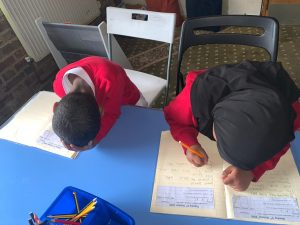
Spelling
There are termly Spelling Bee competitions. Children’s phonological awareness and spelling strategies are assessed and this informs teaching. Dedicated time is allocated for teaching and investigating spelling. Children are encouraged to practise their spellings and high-frequency wordlists as homework. Word banks (given and created) and dictionaries can support children’s spelling at the point of writing. In KS1 and KS2 wordscapes will be provided in an appropriate format for the year group to support the correct use of new vocabulary. Wordscapes may be used, in EYFS for children exceeding age related expectations.
Spelling Bee Competitions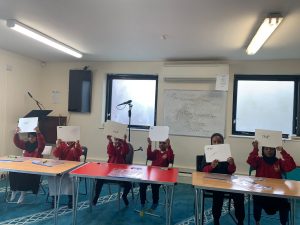
The valuable learning outcome of the spelling bee results in the children gaining competency in vocabulary, allowing them to excel at reading and writing. Understanding more words will allow our children to become literate and enjoy reading an extensive range of material. The spelling bee will allow every pupil to develop a range of cognitive skills, including the ability to handle pressure. The learning process accompanying the spelling bee is likely to enhance pupils’ memory and allow them to develop better learning skills, which can be highly beneficial in other areas of learning.
Sentence level work
This includes grammatical awareness, sentence construction, punctuation and the higher skills of grammar. This is taught directly through quality texts, modelled examples and investigation. Programmes of study from the National Curriculum are used alongside personal writing, children’s examples and participative activities. Sentence level work is taught through the main English session and at other times where required. The Colourful Semantics resources are used, to help boost the children’s development in constructing accurate sentences where necessary.
We believe writing should be a creative/developmental process both at a functional and an imaginative level. All attempts at writing are valued, and we know that all children have the potential to be successful writers. The compositional and transcriptional skills are taught alongside the creative aspects. Immersion in reading, talk and preparation for writing is essential to the writing development process.
Text type and skills progression are achieved with reference to Johnathon Bonds Toolkit for writing. Children are supported with the visual symbols form the Sentence Tool kit especially in EYFS, KS1 and lower KS2 to help them acquire understanding of devices and skills. Symbols must be used on working walls in the format appropriate for the year group. They could be used to create personalised toolkits for specific individuals or groups.
Writing opportunities are made as ‘real’ and purposeful as possible e.g. letters to the Council, invitations to parents, information leaflets to promote our school, etc.
Writing is taught through:
- Shared writing that is modelled by the teacher as the expert writer with contributions from the children.
This is teacher-led writing with children watching and contributing ideas. Shared writing is not exclusive to English sessions and is taught as part of our creative curriculum. The emphasis may be on the generation of ideas, grammatical awareness, spelling and phonics, compositional, transcriptional, presentational and text level skills or other key strategies needed in writing. During shared writing sessions support staff will be deployed to work alongside specific groups of children or individuals thereby supporting specific needs.
- Opportunities for developmental writing.
In the Early Years Foundation stage children should experience writing in a range of settings and opportunities for developmental writing should be available through all areas of learning and throughout the learning environment. Children’s own attempts at early writing should be celebrated and promoted, alongside the direct teaching of the key skills that will enable the children to progress through the stages of writing development. In the Early Years
Foundation stage and KS1, children’s writing that needs interpretation must be scribed by a teacher or adult working with the group.
- Independent writing.
Throughout school, children need opportunities to develop their confidence and practise their writing skills. All writing activities should have a purpose and quality should be promoted through book marking, publication or presentation to another audience. Writing is modelled and supported from immersion to quality writing. Independent writing is supported through dictionaries,writing frames or planning pro-formas. From Year 2 to year 6,children in eggage in Big Write on Fridays. In EYFS and KS1, children are encouraged to use the ‘think it, say it, write it, check it’ formula to support writing. They can also utilise working walls and wordscapes. In KS2 children will use word-scapes, writing frames, planning pro-formas and working walls in order to support writing. Where appropriate specific spelling and grammar mats will also be shared.
- Writing environment.
The school environment celebrates quality writing through displays of work in handwritten and typed form and signs and labels. All classrooms should have attractive and well-equipped resources for writing that children can access through a writing area or table. Opportunities for writing are planned for and accessible throughout the learning environment and school day. Functional and creative writing are demonstrated and promoted by staff and visitors. Working walls support the writing process with examples of text type, key vocabulary, success criteria, shared writing models and grammar/spelling examples.
- Editing
Children will learn the skill of editing and apply it to their writing. The skill needs to be taught explicitly before we expect children to successfully and independently edit their work. There is progression expectation of this skill:
EYFS
Adults will highlight with pink an error where something needs correcting.Any outstanding sentences in green, When appropriate, they will be provided with a success criteria which prompts them to include a capital letter, full stop, finger spaces and to check their letter formation. In EYFS, children will work towards being able to write a sentence using a capital letter, full stops, finger spaces and checking for sense to automaticity.
Key Stage 1
In Y1, success criteria will be used to support children with their writing. Across KS1, a pink dot will be placed in the margin where an edit needs to take place. In discussion with the adult, the pupil will revise a section of their work. In KS1, editing may include writing on a whiteboard and editing that piece of writing, often in collaboration with another adult.
Key Stage 2
Handwriting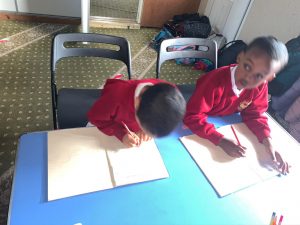
Handwriting and letter formation are explicitly taught throughout the school using the Twinkle cursive handwriting resources. All members of staff model the correct way of forming letters. Children need adult interventions when handwriting to ensure correct formation is practised. Good presentation is emphasised at all times and through all forms of writing. Class-based interventions will support children who need extra support to develop better handwriting; this is especially important in EYFS and KS1. Once children meet handwriting expectations, the English coordinator awards children with pen licences.
In Foundation Stage children are taught to write their name through tracing, copying and writing from memory. They have experience of lots of fine motor control activities in order to strengthen their pencil grip and prepare them for writing. Support is given to those with poor pencil grip through triangular pencils and pencil grips.
Left-handed writers should sit on the left side of the table or find a way that is effective and comfortable for them.
By the end of KS1 we expect children to be able to write with a fair speed, neatly and legibly. We wish them to take a pride in their presentation and most of all show enthusiasm in their work. Throughout KS2, we expect children to incorporate joined-up writing in their everyday work and consistently high levels of presentation are rewarded with a pen licence. Our overall aim is for our children to produce clear and legible joined-up writing and present it in a pleasing way for us all to enjoy.
Impact
Assessment
Throughout the Reception year we use EYFS Profile and assess the children against the Development Matters document. At the end of the year we assess the children against the Early Learning Goals.
At Assunnah Primary we use our own in-house assessment tool for writing. Assessment for learning is ongoing. Summative assessments are undertaken towards the end of each half term and reported to the Head teacher during pupil progress meetings, where adaptations and interventions are established, to allow the children that need it to achieve age related expectations.
Reading assessment is monitored using the Mark assessment termly. Observations and notes, weekly spelling tests, regular comprehension tests, and marking inform assessment. These assessments are used to, inform planning and to target teaching to the needs of the children as well as to track progress.
Marking of children’s writing is also completed by the teacher providing a positive comment specifically linked to the learning objective, and a target, where necessary, to move children on in their writing. Teacher highlights in some good asects and some corrections in pink. Children respond in purple. In KS1and KS2 children’s writing is assessed each Half term. Assessment informs the teacher’s planning and allows appropriate learning intentions for children to be set. Writing Assessment ladders are used for KS1 and KS2 to support the year-group expectations assessment. These are completed termly. In EYFS, individual assessments are kept for each child on an ongoing basis. Our Marking Policy gives specific guidance on how feedback can be given and work marked.
In Year One children sit the Phonics screening check in June. This check tests whether children are able to use their phonic knowledge to decode a number of both real and pseudo-words to an appropriate standard.
In Year 2 and Year 6, children take their SATS in May and are tested in spelling, reading, reading comprehension and writing. Year 6 children also sit the spelling, punctuation and grammar (SPAG) test. They are given teacher-assessment levels and SATS levels. Year 2 children are expected to be working at age related expectation in each subject and Year 6 children are expected to reach age related expectation. Most children take the test with the exception of those children falling far below their expected attainment. From 2016 both Year 2 and Year 6 children have SATs in reading, grammar, punctuation and spelling.
